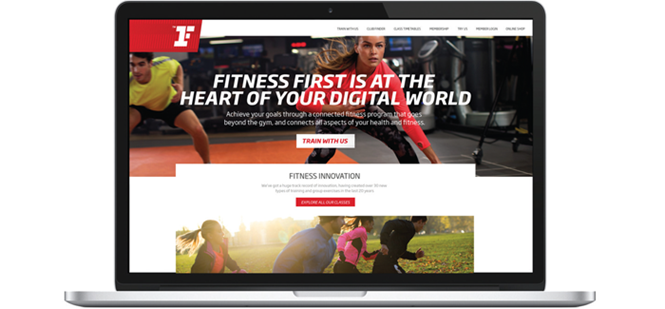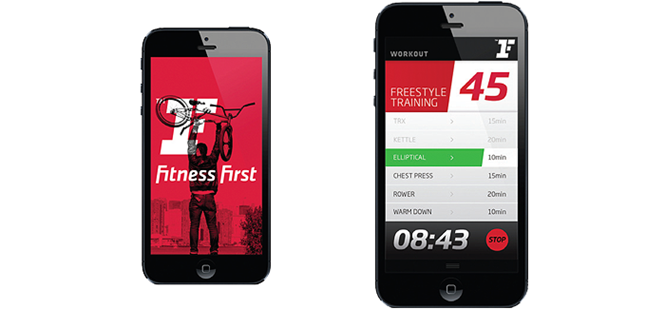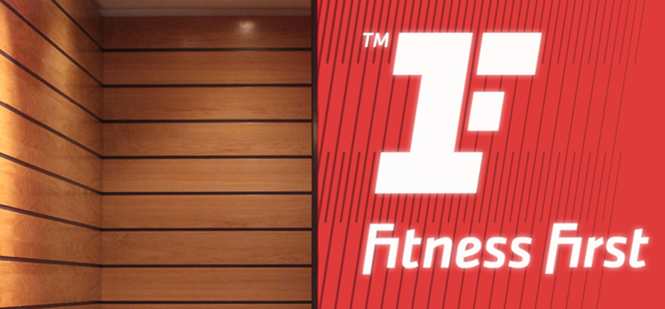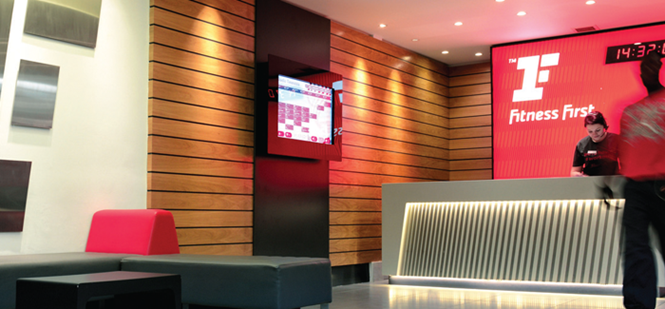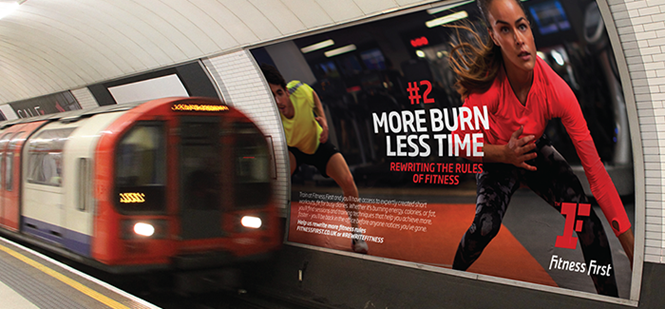Shaping up
Losing reputation, money and members, Fitness First needed to change. After a major repositioning, it may have.Brittany Golob examines the new strategy
“Look at this uniform and look at us,” an employee at Fitness First told Richard Buchanan, director of consulting and founder of London-based design agency The Clearing. The global gym brand had lost momentum, respect and money over the past few years all of which boiled down to the uniforms worn by frontline employees – ostensibly the brand’s consumer-facing ambassadors. The single nylon polo distributed to staff was paired with black suit trousers. Buchanan calls this ‘the mullet’ – party on top, business on the bottom. But it represented the wider problem that Fitness First was facing – it’s brand was failing in a number of ways.
The uniform dilemma is as much a symptom as a manifestation of the brand’s ineffectiveness and the business’ declining fortunes, both literal and metaphorical. Fitness First had experienced a massive drop in customer satisfaction, sales and reputation – particularly Australia and the UK – though the brand was on the uptick in Asia and select other regions. It was purchased by investment capital group Oaktree, which specialises in distressed organisations.
In the autumn following the Oaktree acquisition, new CEO Andy Cosslett, former CEO of the Intercontinental Hotels Group (IHG), sat down to tea with Buchanan. They shared a Mancunian background and a passion for changing businesses for the better; Cosslett had previously overseen IHG’s retrenchment. Then, on 7 January 2013, Buchanan found himself on a plane to Bangkok at the start of an international tour of Fitness First’s locations.
“Our job was to go and understand the business challenge,” Buchanan says. For The Clearing, this was not so much about the creative as it was about the repositioning of the Fitness First brand. To do that, the company needed to revamp everything from it’s mullet-like nylon uniforms to its internal structures to its customer experience. The high-profile redesign that has been making headlines in the UK is almost an added bonus; nice, necessary, but not fundamental.
Fitness First, instead, looked beyond its own borders and espoused the desire to ‘go further’ thus striving to revolutionise the health and fitness sector. “Our brief was fairly audacious,” Buchanan says. “We needed to redefine the category. We had to develop a brand that would get people to reconsider what is a broken brand in the UK and Australia.” This was no mean feat for an organisation with 93 outposts in Australia and 80 in Britain, not to mention its 367 other clubs spread across 21 countries.
With a brief that ambitious and a business that massive, research was a clear way to address the issues at hand. “We started off by looking at what influences human behaviour,” group marketing director of Fitness First David Langridge says. “We started to realise that there was a connection between the six emotional needs that make people happy and how we can create a member experience.”
Prominent sport psychologist and Loughborough University professor Stuart Biddle worked with Fitness First to identify why exactly people exercise. “The superficial reasons why people join are not the deep-rooted reasons that people stay,” Langridge says. “Our industry needs to change. We need to stop talking about results and we need to start talking about the benefits of why you would exercise, and educate people about why you would exercise.” From this psychological approach, Langridge’s team was able to draw a correlation between the essential physical human needs – and there are six of them – and the satisfaction they drew not only from exercise itself but from the inevitable lifestyle change that occurs when health is made a primary focus. He says, “We faced a choice as an organisation: Do we remain another gym provider or do we become the gym that really specialises in helping people. Obviously we chose the latter.”
Research carried out by McKinsey into the nature of growth markets, particularly in the health and lifestyle space, complemented that done by Biddle. Together, they indicate the ways in which Fitness First would have to change: both in improving customer and employee experience and in redefining the organisation’s position in the market.
“We realised that there was a connection between the six emotional needs that make people happy and how we can create a member experience”
Service became the focal point of the repositioning. It would not only be the inspiration behind increased customer satisfaction, but the stimulus driving internal change and the proposition around which to align both the physical fitness centres and the brand itself.
New Fitness First centres were designed to ditch the different-coloured-box-filled-with-the-same-kit model featured in most gyms. Research showed The Clearing that non-gym members sought a place that would be supportive at first. But, they also learned that beginners often advance to desire a competitive environment. Members of group exercise classes, those with personal trainers or those who open most of their emails will remain members for longer. In fact, a member who opens 72% of his or her emails will apparently never leave.
“We needed to build a proposition that was much more customer friendly,” Buchanan says, adding that the gym needed more communications touchpoints with the customer. Fitness First didn’t want to sell its customers a contract and then “leave them to it until the day they keel over and die,” according to Buchanan.
A service-oriented approach to communications meant the company had to drastically reorganise the layout and composition of its fitness centres.
Langridge says, “Our brand is built around strong aspirational thinking, with our concept of going further in life. We wanted to show that strong aspirational thinking throughout our club design and our branding itself.” He adds that people want to feel safe, educated and connected to their gyms. They want to become part of a community.
Buchanan points to the Asian mentality toward fitness where it is a holistic lifestyle choice, not an means to an end. This insight, along with the service objectives, prompted Fitness First to do away with the machine-focused model and instead embrace functional training.
The familiar machines sprawled across the hardwood floors and exercise mats of gyms around the world tend to work only one muscle or muscle group at a time. The lat pull-down machine works on lats, the chest press on pecs and so on. Fitness First has redesigned its centres to train more comprehensively and more efficiently. This means, fewer machines, more group exercises, free weights and open space in fitness centres.
That shift in thinking, however, caused the need for more consistent and more thorough education about fitness. But, as Buchanan says, it’s impractical for a centre to be crawling with personal trainers giving one-to-one support. Instead, the rebrand focused on digital. Touch screens in gyms and apps for personal devices include demonstrations and information about functional training. “People were keen to try new things,” Buchanan says. But nobody wants to ask the question because they don’t want to look foolish.” A digital solution overcomes the initial fear people have of trying new exercises while also serving the educational purpose needed in the new style gyms.
With philosophy, strategy and implementation taken care of, the only remaining issues left to be addressed were membership processes, internal restructuring and of course, the design of the new brand.
Employees were to be a focus of the rebrand from the start, as evinced through The Clearing’s discussions with staff. Fitness centre staff are, on the whole, a physically fit bunch with a passion for exercise and healthy living. At the old Fitness First, frontline staff had uniform, office and other day-to-day issues that remained unaddressed. However, HR was not often integrated into the business nor was it being used as a strategic tool, Buchanan says.
So The Clearing made one change that impacted the way employees were treated within the business. “We focused on the uniform,” he says. “We worked with the fitness guys about developing a new fitness philosophy and we worked with HR to drive the brand into certain sets of behaviours and performance metrics so that staff can be assessed.” The sales-oriented culture was doomed. The relaxation of the push to sell memberships has a ripple effect on customer satisfaction – now people are becoming members, not being sold a membership, a subtle but important difference that leads Fitness First to becoming a brand-led business and induce a brand-led culture among staff.
Additionally, Fitness First has implemented a staff qualifications and accreditation programme in which all frontline employees will become fully-fledged fitness instructors by 2015.
During the research, brand development and implementation process, Fitness First has undergone vast changes. Its internal structures have become more brand-led, it’s consumer offering has been revolutionised and its visual identity has transformed from a slightly character-less, corporate feeling look to a bold, striking brand akin to an apparel company’s design.
The brand was the one of the final things to be addressed by The Clearing in repositioning Fitness First. Buchanan says The Clearing sought to make the brand cool. Langridge agrees, “We wanted to show that we had a better presence on the high street. We wanted to show that we were in a leadership position and we wanted to win that position back in areas that we had lost. We want to be seen as an inspiring, engaging and vibrant place to be. The design of our clubs were directly derived to drive this.” He says the logo and brand change are more a confirmation and representation of the business’ changes, rather than the point of the repositioning.
The healthcare sector though, is not generally receptive to new directions. Gyms borrow the same imagery and iconography from each other, intentionally or unintentionally. But Oaktree, the capital group behind Fitness First, were willing to change. Langridge says, “We had a new leader and his strength and leadership to get us to this point, Oaktree’s foresight to be able to know and understand what needs to be done and back it, we’ve been able to put strength behind the research and get people to follow us. Buchanan adds, “When we were talking about going further and changing something that was a quite clinical looking brand to something that felt like a sports apparel brand, [the group’s stakeholders] needed convincing that that was the way to go.” But he says in the end, they recognised the difference the repositioning – including the new brand – would make to the business in the long term.
The rollout of the brand to the company’s hundreds of locations is nearly all that remains. Langridge says the challenge is to get senior leaders across 16 different countries to unite behind the repositioning. The implementation of the brand is also ongoing. Twenty London-based fitness centres will get the nod first as a sort of pilot programme. From there, the new look gyms will extend to all of the Fitness First sites.
Oh, and every employee will get a new uniform.
Peer review
Julian Gorham, head of brand, Carnegie Orr
I like the new identity for Fitness First by The Clearing. It looks pretty fit to me; well shaped, nicely toned. Richard Buchanan and team ‘clearly’ know what they’re doing and the reasons he’s given recently in the marketing press for the new look are on the pace. But as we all know, at least those of us who break a sweat every day over these things, brand is more than communication. What’s more interesting is whether positioning as a national authority on fitness and exercise is a catalyst for improving people’s experience. From online comments, most Fitness First gyms are great. But there’s the odd tale of underpowered showers and changing rooms people would quite like to change. The real test of the rebrand will be, as ever, will it positively affect Fitness First’s reputation – and the conversations people are having online? So, as I say… it stands up all right, but will it run?

